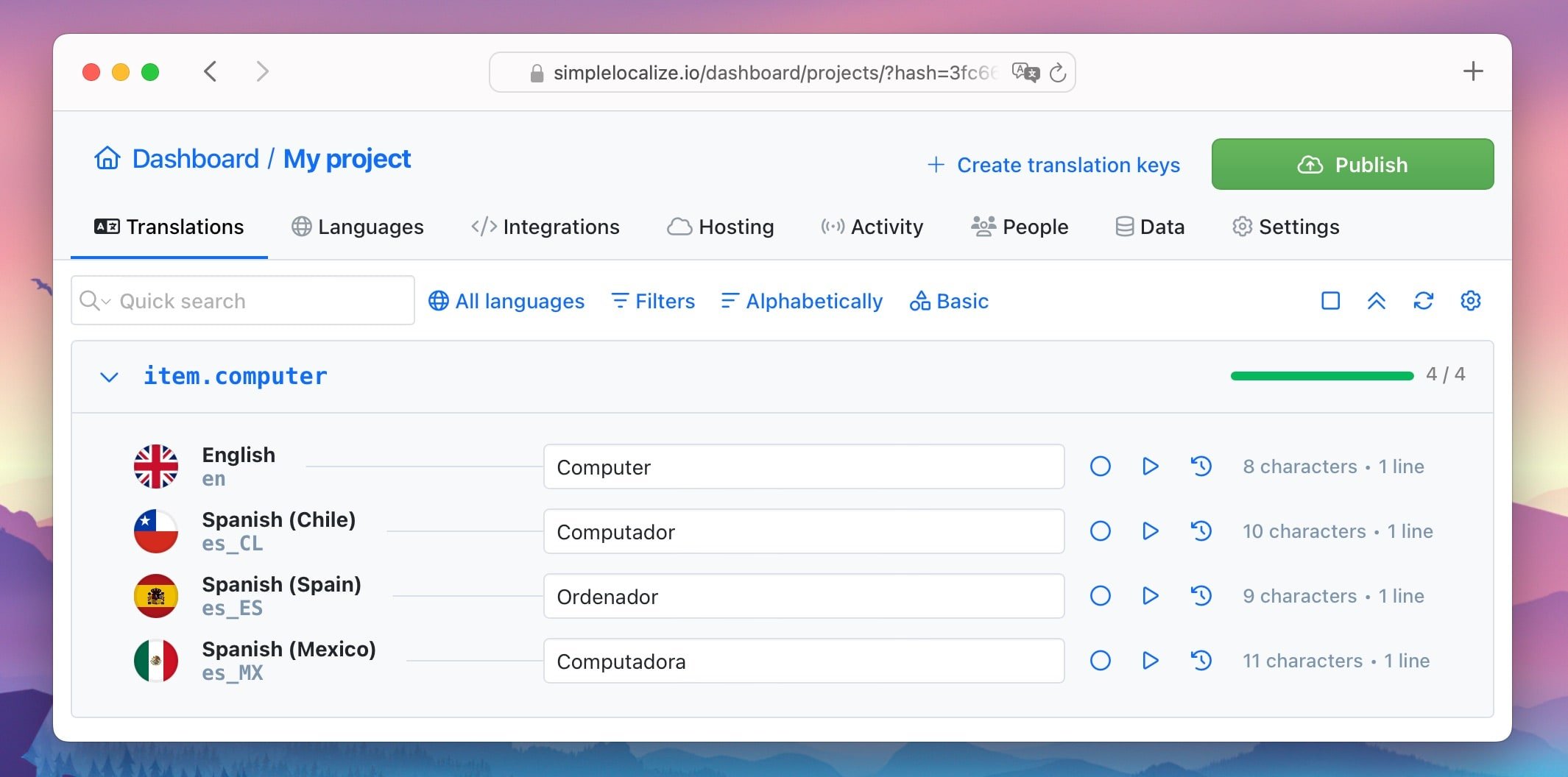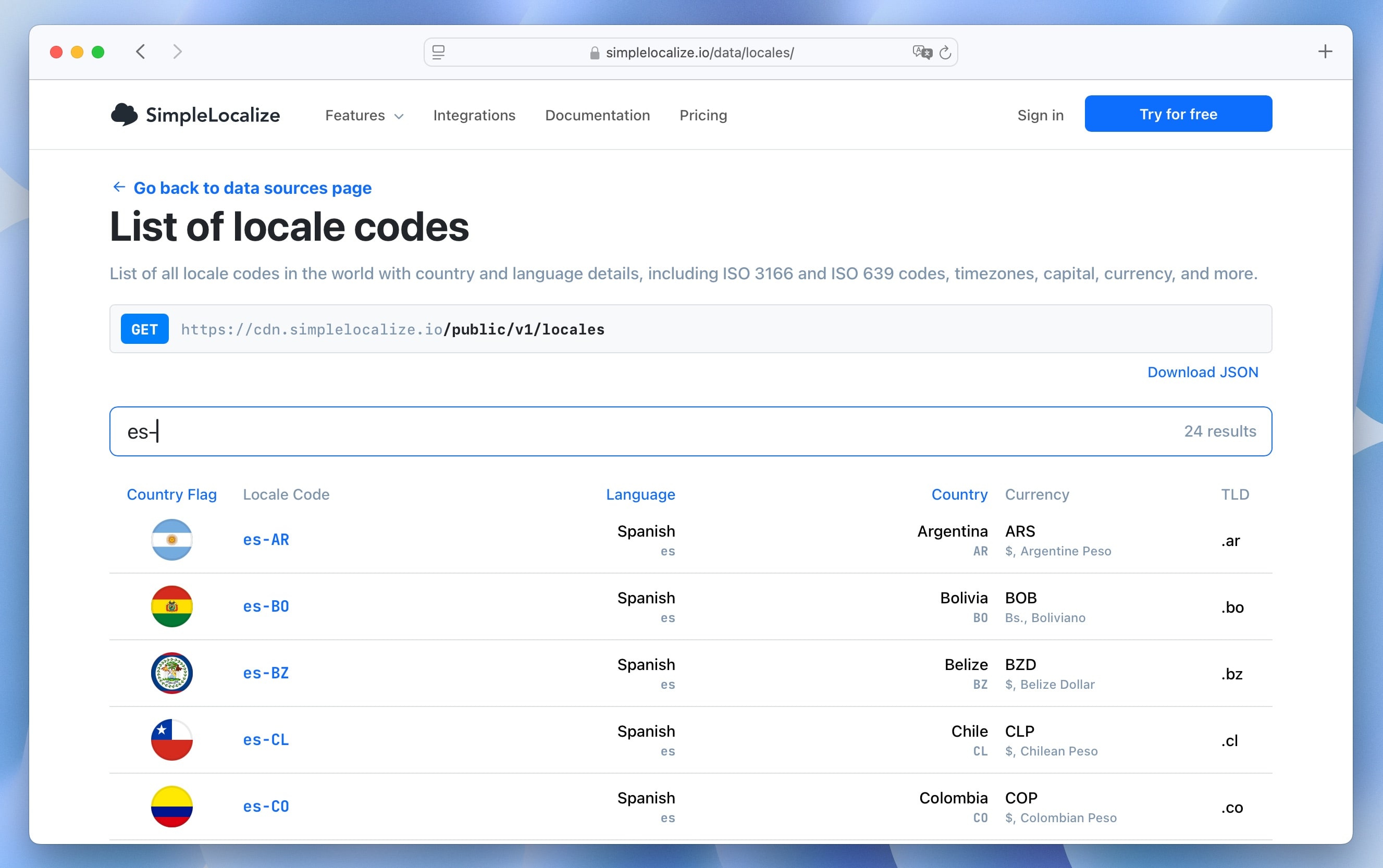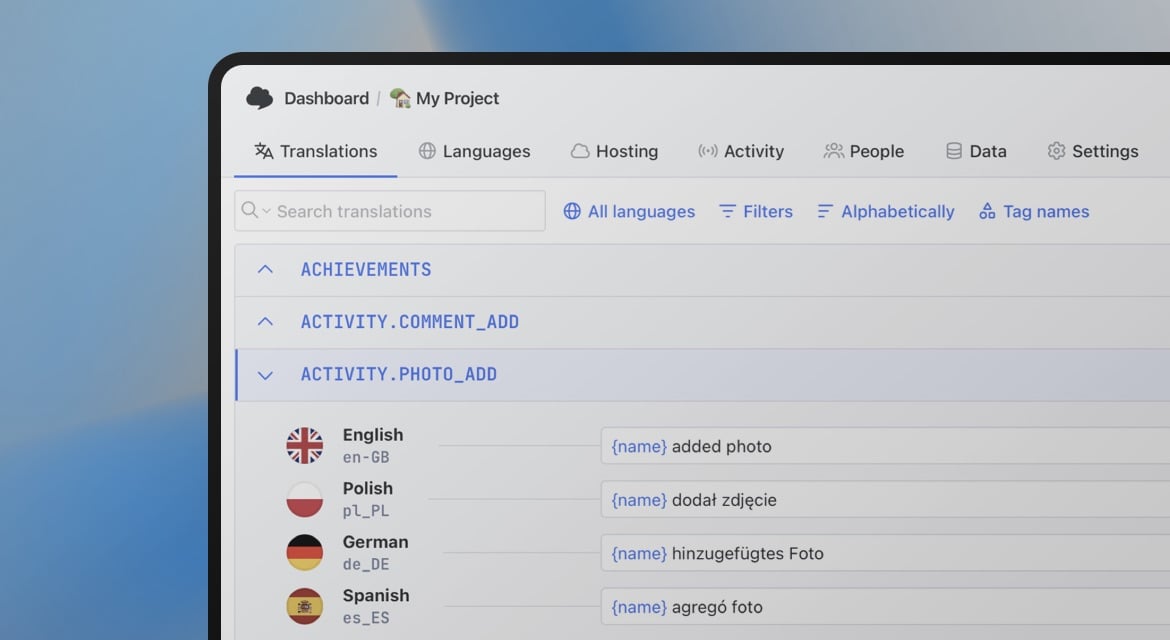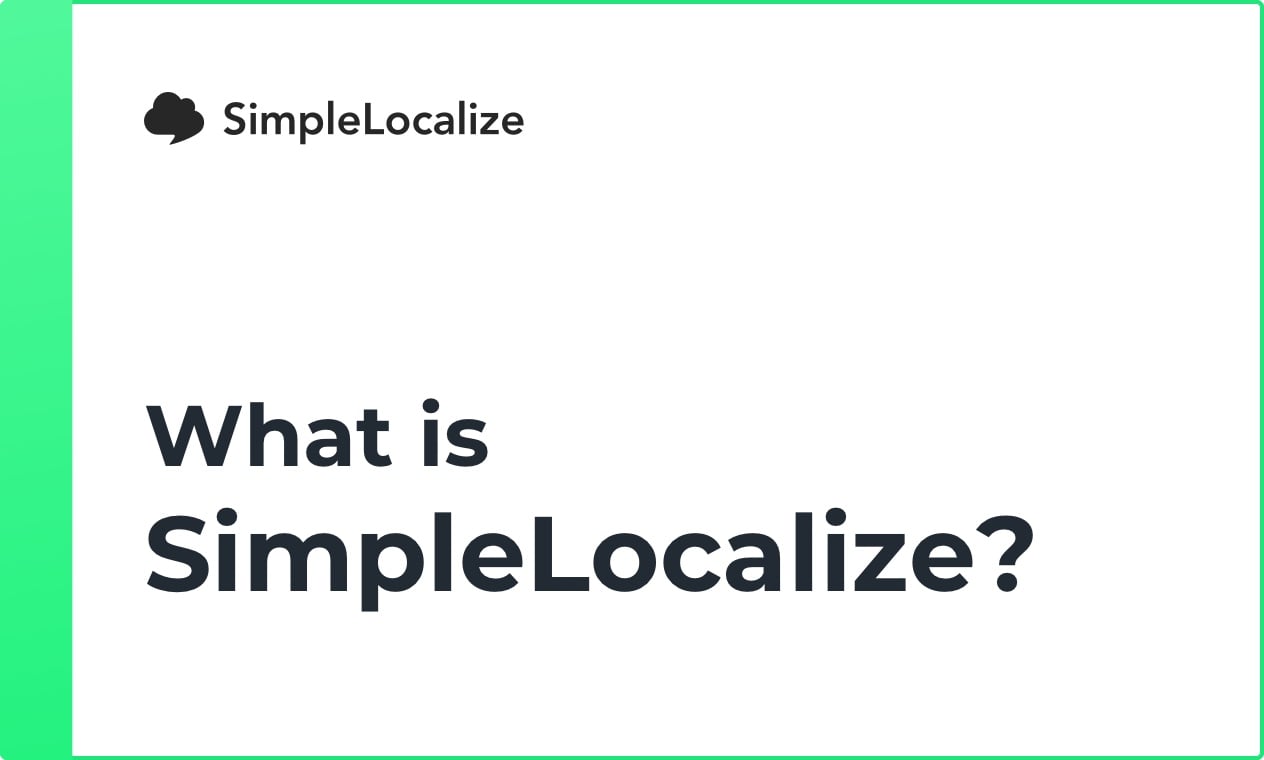Language vs Locale: What's the difference?

When localizing software or translating content, language and locale are not the same. Language is the set of words and grammar people use to communicate. Locale is the cultural wrapper around that language, covering date formats, currency symbols, measurement units, and other region, specific settings.
If you have seen “color” in one app and “colour” in another, or a price like 1.000,00 €, you have experienced the difference.
In this guide, we will break down language vs locale and share practical tips for handling both in software localization, so your product feels truly local, wherever it's used.
If you are looking for a list of locale identifiers, you can find it in our Locale codes list and Language data list.
Language vs Locale: Quick comparison
Here is a quick comparison of language and locale to help you understand the main differences:
| Feature | Language | Locale |
|---|---|---|
| Definition | System of words, grammar, and syntax used for communication. | The cultural and regional context of a language |
| Codes | en (English), es (Spanish), fr (French) | en-US (English – United States), es-ES (Spanish – Spain), fr-FR (French – France) |
| Focus | Words and meaning | Formats, symbols, cultural context |
| Includes | Vocabulary, spelling, grammar rules | Date/time formats, currency, measurement units, idioms |
| Example | "Hello" in English, "Hola" in Spanish | $1,000.00 vs 1.000,00 € |
What is Language?
Language is the linguistic system people use to communicate. It's the foundation of translation work and includes:
- Vocabulary: The set of words used in a language.
- Grammar: The rules that govern how words are combined to form sentences.
- Syntax: The structure of sentences and phrases.
When translating, the goal is to convert content from a source language (e.g., English) to a target language (e.g., Spanish).

What is Locale?
A locale goes beyond words as it adapts content to the cultural and regional norms of a specific audience.
Locale includes:
- Date formats → MM/DD/YYYY (US) vs DD/MM/YYYY (UK)
- Currency symbols → $ (US) vs € (EU)
- Measurement units → Miles (US) vs Kilometers (EU)
- Time formats → 12-hour clock (US) vs 24-hour clock (EU)
For example, English speakers in the US, UK, and Australia all understand each other, but their locale preferences differ in spelling, currency, and formatting.

Why locale matters in software development
Multilingual apps and websites are becoming increasingly common as businesses expand globally. However, simply translating text is not enough. Understanding the difference between language and locale is crucial for creating a user-friendly experience that feels natural to users in different regions.
When developing software, the translation and localization process is about adapting language and locale so the product feels native to each audience. Ignore locale, and you risk confusing users or even causing critical errors (e.g., wrong currency or misinterpreted dates).
Ignoring locale in software can:
- Cause bugs (e.g., 03/04/2025 being read as March 4th or April 3rd)
- Confuse payment processing with incorrect currency symbols
- Lead to poor user experience because the product feels “foreign”
- Result in miscommunication due to cultural differences in expressions or idioms
How to implement locale
In the code of an application or webpage, a locale identifier is used to specify the language code and region where the language variation is used.
A locale identifier is typically formatted as
language-REGION, wherelanguageis the ISO 639-1 code for the language, andREGIONis the ISO 3166-1 alpha-2 code for the country or region.
For example, English is spoken in different parts of the world. It is adapted to local audiences using locale identifiers such as en-GB for the UK, en-AU for Australia, or en-US for the United States.
Below you can see an example of locale translations of the word "computer" to Spanish for different regions:

Check our list of locale identifiers for a complete overview of locale codes.
Locale formatting
The format of the locale identifier can vary depending on the environment used in the project. For instance, Java uses underscores (_) instead of hyphens (-), which are commonly used in other environments.
Standard Locale format: language-REGION
es-ES (Spanish - Spain)
es-CL (Spanish - Chile)
Alternative Locale format: language_REGION (used in environments like Java or Windows)
language_REGION
es_ES (Spanish - Spain)
es_CL (Spanish - Chile)
Locale identifiers in code
Modern programming languages offer built-in support for locale-aware formatting.
For example, in JavaScript, you can use toLocaleDateString() for quick conversions, or Intl.DateTimeFormat for more control.
Example 1: Quick locale formatting
const date = new Date();
console.log(date.toLocaleDateString('en-GB')); // 11/08/2025
console.log(date.toLocaleDateString('en-US')); // 08/11/2025
Example 2: Custom formatting with Intl.DateTimeFormat
const date = new Date();
const options = { year: 'numeric', month: 'long', day: 'numeric' };
const formattedDate = new Intl.DateTimeFormat('en-US', options).format(date);
console.log(formattedDate); // "August 11, 2025"
Here:
en-USsets the locale to US English.optionscontrols how the date is displayed (full month name, numeric day, numeric year).
By simply changing en-US to en-GB or fr-FR, you can instantly adapt the format to different regions.
Learn more about number formatting in JavaScript.
Locale in localization
In localization, locale identifiers are used to manage translations and regional settings. They help ensure that the right content is displayed based on the user's language and region preferences.
For example, in a localization file, you have:
{
"en-US": {
"greeting": "Hello",
"dateFormat": "MM/DD/YYYY"
},
"en-GB": {
"greeting": "Hello",
"dateFormat": "DD/MM/YYYY"
},
"es-ES": {
"greeting": "Hola",
"dateFormat": "DD/MM/YYYY"
}
}
Locale codes are also used in your URL structure to serve different content based on the user's locale. For example, a URL might look like this:
https://example.com/en-US/products
https://example.com/en-GB/products
https://example.com/es-ES/products
This allows the application to serve the correct language and regional settings based on the user's locale.
Learn more about URL localization.
Common locale identifiers
Here are some common locale identifiers for different languages and regions:
- en-US: English - United States
- en-GB: English - Great Britain
- es-ES: Spanish - Spain
- es-MX: Spanish - Mexico
- fr-FR: French - France
- fr-CA: French - Canada
- de-DE: German - Germany
- de-AT: German - Austria
- pt-BR: Portuguese - Brazil
- pt-PT: Portuguese - Portugal
- it-IT: Italian
- zh-CN: Chinese - China
- zh-TW: Chinese - Taiwan
- ja-JP: Japanese - Japan
- ko-KR: Korean - South Korea
For more locale identifiers, you can refer to our Locale codes list and Language data list.

Conclusion
Translating apps and software for a global audience can be complex. A translation that ignores the cultural and regional context can lead to misunderstandings or even offend the target audience. Therefore, understanding the role of locale is crucial in the translation process to create meaningful and culturally appropriate content. By considering both language and locale, developers and translators can ensure that their products resonate with users worldwide.
FAQs
Is a locale the same as a dialect?
No. Dialects are language variations in vocabulary and pronunciation. Locales include cultural formatting rules as well.
Can two countries share the same language but have different locales?
Yes. Example: en-US vs en-GB. Both are English but differ in spelling, dates, and currency.
What happens if I only translate the language but ignore the locale?
Users may understand the words but find your product hard to use or untrustworthy.
How do I choose the right locale for my audience?
Consider the primary language spoken, regional preferences, and cultural norms of your target audience. Use locale identifiers to specify these preferences in your application.




